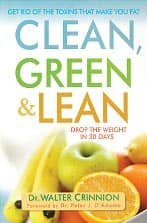Life Extension Magazine®
Mechanism Found for Omega-3 Fatty Acids in Lowering Inflammation | |
An article published in Cell reports the discovery of a mechanism used by omega-3 fatty acids in reducing insulin resistance and chronic inflammation.* Recent research revealed that members of a family of signaling molecules known as G protein-coupled receptors respond to free fatty acids. Using cell cultures, Jerrold Olefsky, MD and colleagues found that exposure to omega-3 fatty acids activates one of these receptors. The receptor, known as GPR120, is located on macrophages in fat cells, and, when activated, prevents the macrophages from causing inflammation. The researchers compared the effects of diets supplemented with the omega-3 fatty acids EPA and DHA in mice bred to lack the GPR120 receptor and normal mice. Prior to receiving EPA and DHA, both groups of animals received high fat diets to induce insulin resistance. While the normal mice experienced enhanced insulin sensitivity and reduced inflammation after omega-3 supplementation, mice lacking the receptor failed to benefit. Editor’s note: Dr. Olefsky noted that their work “suggests a possible way to treating the serious problems of inflammation in obesity and in conditions like diabetes, cancer, and cardiovascular disease through simple dietary supplementation.” —D. Dye | |
| Reference | |
| * Cell. 2010 Sep 3;142(5):687-98. | |
Vitamin B6 Supplementation Lowers Inflammation in Rheumatoid Arthritis Patients | |
| The European Journal of Clinical Nutrition reported a trial conducted by researchers in Taiwan which found an anti-inflammatory benefit for vitamin B6 supplementation in rheumatoid arthritis patients.* Dr. Y-C Huang of Chung Shan Medical University in Taichung and colleagues randomized 35 adults with rheumatoid arthritis to receive 5 milligrams per day folic acid or 5 milligrams folic acid plus 100 milligrams vitamin B6 for 12 weeks. Blood samples obtained from the subjects at the beginning and end of the study were analyzed for plasma pyridoxal 5’-phosphate (the active form of vitamin B6), serum folate, and factors involved in inflammation, including C-reactive protein, erythrocyte sedimentation rate, interleukin-6 and tumor necrosis factor-alpha (TNF-α). At the end of the twelve weeks, interleukin-6 and TNF- were decreased among those who received supplemental vitamin B6. Higher plasma interleukin-6 levels were related to reduced levels of plasma pyridoxal 5’-phosphate. Editor’s note: The authors write that their results “provide valuable reference data for clinical practice with regard to the potential beneficial use of vitamin B6 to suppress inflammatory response in rheumatoid arthritis patients.” —D. Dye | |
| Reference | |
| * Eur J Clin Nutr. 2010 Sep;64(9):1007-13. | |
B Vitamin Supplements Slow Brain Atrophy in Cognitively Impaired Patients | |
The results of a trial reported in the journal PLoS ONE revealed that men and women with mild cognitive impairment who were supplemented with vitamin B6, vitamin B12 and folic acid experienced a reduction in the rate of brain atrophy compared with those who received a placebo.* Researchers at the University of Oxford randomized 168 subjects to receive 20 mg of vitamin B6, 500 mcg of vitamin B12, and 800 mcg of folic acid per day for 24 months. The age-adjusted rate of brain atrophy per year was 29.6% less and homocysteine levels were 31.7% lower by the end of the trial in the active treatment group compared to the placebo group. Among those who received the vitamins and whose baseline homocysteine levels were among the top 25%, a 53% reduction in the rate of atrophy occurred compared to the placebo group. Editor’s note: The authors remark that while elevated homocysteine could be a direct cause of the brain atrophy observed in the study, it may alternately be the result of reduced levels of folate, vitamin B6, and vitamin B12, with increased homocysteine only serving as a marker of these insufficiencies. —D. Dye | |
| Reference | |
| * PLoS One. 2010 Sep 8;5(9):e12244. | |
CLEAN, GREEN & LEAN | |
Drop the Weight in 30 DaysWhen choosing to save the planet or save your life, most people would choose the latter. However, the book Clean, Green & Lean (Wiley, 2010) by Dr. Walter Crinnion, offers you a way to do both. Crinnion is one of America’s foremost authorities on environmental medicine and the director of the Environmental Medicine Center of Excellence at the Southwest College of Naturopathic Medicine in Arizona. In his words, the strategy for this book is a simple one: “Stop new toxins from coming into the body and get accumulated toxins out of the body.” He lays out a plan throughout the book to accomplish these goals in four simple ways:
With these four steps elaborated throughout the pages of Clean, Green & Lean, readers will be treated to broad brush concepts like avoiding reactive foods like wheat, sugar, and dairy, which commonly cause problems, to more specific strategies to avoid chemicals, like which plastic wrap is the safest to cover your food with (it’s a trick question—the best option is to never use them, but if you have to, use wax paper). The book is divided into three parts, beginning with “Part One: Understanding and Overcoming Toxins.” This part is dedicated to teaching you how to reduce your toxic burden, and it goes into depth to explain what is called the “toxin-fat” connection. Readers may find this section disturbing when they learn how easily things like increased exposure to pesticides can lead to poisoning, weight gain, and increased risk of heart disease, liver disease, and cancer. Part Two of the book explains the Clean, Green diet, what you need to get rid of to follow it, and which supplements are most effective in combating disease and cleansing your body. Headlining the list of Crinnion’s toxin-fighting nutrients are supplements that most Life Extension Magazine® readers are familiar with: vitamin B1, vitamin B2, vitamin B6, magnesium, alpha-lipoic acid, N-acetyl cysteine, and selenium. In order to help readers capitalize on the information distributed in the first two-thirds of the book, Part Three lays out a blueprint for readers to follow to live a Clean, Green & Lean life. This includes a four-week plan to follow, as well as healthy recipes and a meal-by-meal fourteen-day menu plan. Clean, Green & Lean is an eye-opening read that lifts the veil on the toxins that surround us every day. After completing this book, your perspective on everyday objects, from microwave-safe bowls, to cologne, will no doubt be changed…but so will your life, for the better. |







